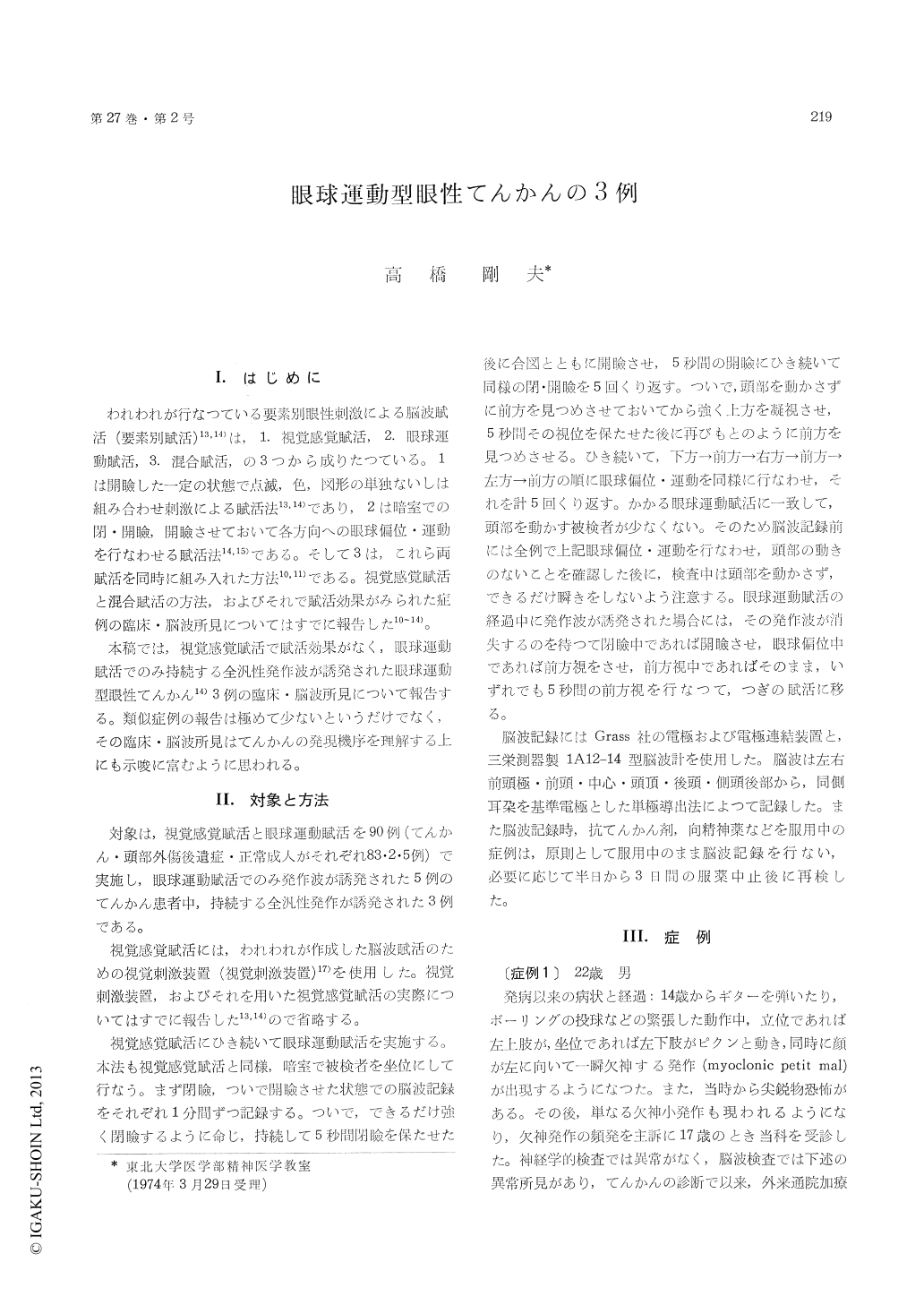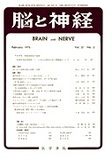Japanese
English
- 有料閲覧
- Abstract 文献概要
- 1ページ目 Look Inside
I.はじめに
われわれが行なつている要素別眼性刺激による脳波賦活(要素別賦活)13,14)は,1.視覚感覚賦活,2.眼球運動賦活,3.混合賦活,の3つから成りたつている。1は開瞼した一定の状態で点滅,色,図形の単独ないしは組み合わせ刺激による賦活法13,14)であり,2は暗室での閉・開瞼,開瞼させておいて客方向への眼球偏位・運動を行なわせる賦活法14,15)である。そして3は,これら両賦活を同時に組み入れた方法10,11)である。視覚感覚賦活と混合賦活の方法,およびそれで賦活効果がみられた症例の臨床・脳波所見についてはすでに報告した10〜14)。
本稿では,視覚感覚賦活で賦活効果がなく,限球運動賦活でのみ持続する全汎性発作波が誘発された眼球運動型眼性てんかん14)3例の臨床・脳波所見について報告する。類似症例の報告は極めて少ないというだけでなく,その臨床・脳波所見はてんかんの発現機序を理解する上にも示唆に富むように思われる。
Clinical-EEG findings of 3 male patients of ophthalmic epilepsy of oculomotor type (mean age of 20 years) were reported. Petit mal absence and grand mal seizures were seen in 3 and 2 cases, respectively. There were no abnormal neurological findings, but mean I. Q. was 78. Seizure discharges induced by oculomotor activation in these 3 cases (visuo-sensory activation was ineffective) were secondary bilateral synchrony (3 c/s spike and wave complex) with primary focus in the right frontal (central) area in association with petit mal absence. From the method of oculomotor activation and such EEG findings, it was suggested that the seizure discharges induced by oculomotor activation might primarily originate from epileptic focus in the right frontal eye field.

Copyright © 1975, Igaku-Shoin Ltd. All rights reserved.


